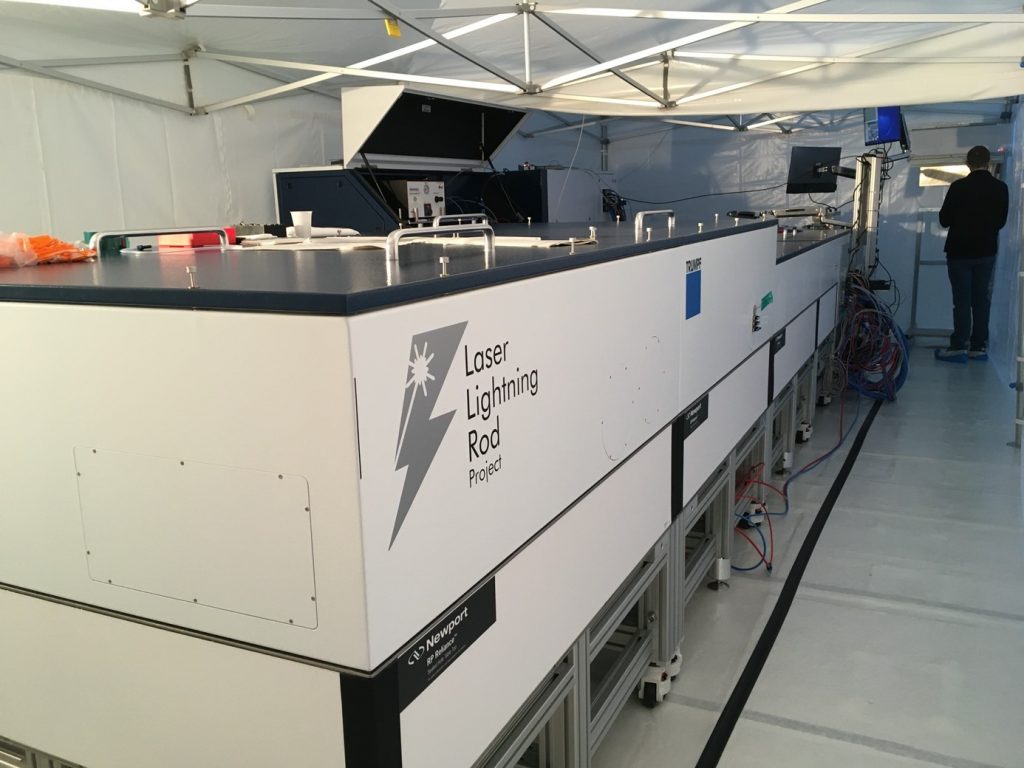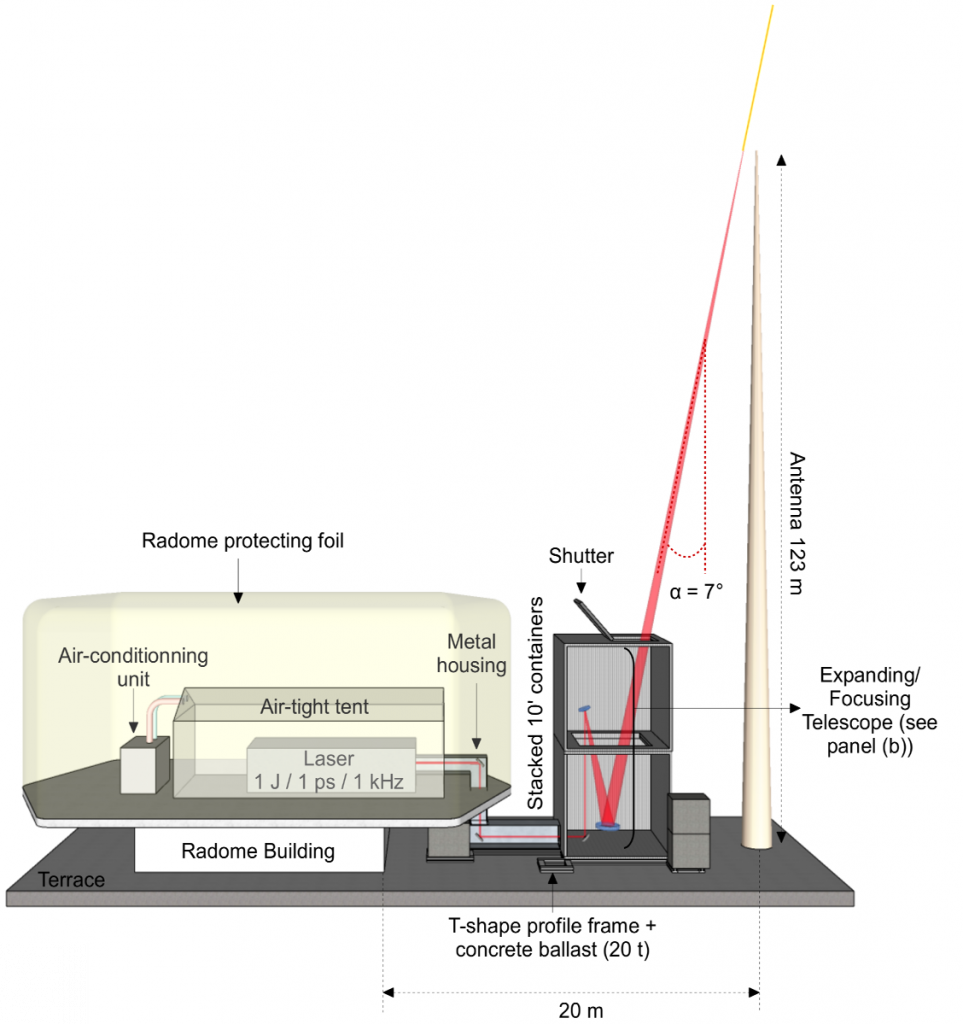The Laser lightning Rod project
Lightning is highly destructive due to its high-power density and unpredictable character. Directing lightning away would allow to protect sensitive sites from its direct and indirect impacts (electromagnetic perturbations). Up to now, lasers have been unable to guide lightning efficiently since they were not offering simultaneously terawatt peak powers and kHz repetition rates. In the framework of the Laser Lightning Rod project, we developed a laser system specifically for lightning control, with Joule-range pulses of 1 picosecond duration at a repetition rate of 1 kHz. The project aims at investigating its propagation in the multiple-filamentation regime and its ability to control high-voltage discharges. In particular, a field campaign at the Säntis mountain in Switzerland will assess the laser’s ability to trigger upward lightning in 2021.
This project funded by a European FET-OPEN grant is a collaboration between 4 laboratories and 3 companies coordinated by Aurélien Houard of LOA.
T.Produit, P. Walch, C. Herkommer, A. Mostajabi, M. Moret, U. Andral, A. Sunjerga, M. Azadifar, Y.-B. André, B. Mahieu, W. Haas, B. Esmiller, G. Fournier, P. Krötz, T. Metzger, K. Michel, A. Mysyrowicz, M. Rubinstein, F. Rachidi, J. Kasparian, J.-P. Wolf, A. Houard, “The Laser Lightning Rod project,” The European Physical Journal Applied Physics 93, 10504 (2021)
C.Herkommer, P. Krötz, R. Jung, S. Klingebiel C. Wandt, R. Bessing, P. Walch, T. Produit, K. Michel, D. Bauer, R. Kienberger, and T. Metzger, “Ultrafast thin-disk multipass amplifier with 720 mJ operating at kilohertz repetition rate for applications in atmospheric research,” Optics Express 28, 30164 (2020)





